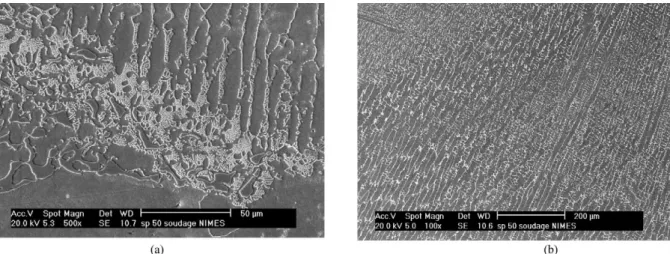Experimental and numerical investigation of the weld repair of superplastic forming dies
Texte intégral
Figure
![Fig. 1. SEM micrographs showing the structure of the high carbon alloy (a) and low carbon alloy (b) and TEM micrograph of a M 23 C 6 secondary carbide precipitated in both alloys (c) [M = Cr, W or Nb].](https://thumb-eu.123doks.com/thumbv2/123doknet/12410606.332846/3.892.93.409.448.1083/micrographs-showing-structure-carbon-micrograph-secondary-carbide-precipitated.webp)



Documents relatifs
In this pilot study, we demonstrate the possibility for upper-arm amputees to intuitively control a polydigital hand prosthesis by using surface myoelectric
I argue that Cavell’s appeal to his autobiographical experience of disillusion with contemporary movies marks out this transformation in the movies as an artistic medium
101 - 54602 Villers lès Nancy Cedex France Unité de recherche INRIA Rennes : IRISA, Campus universitaire de Beaulieu - 35042 Rennes Cedex France Unité de recherche INRIA Rhône-Alpes
Despite rather similar galvanostatic electrochemical signatures (Fig. 7b), longer term stability is obtained with the nano- CaCO3-coated sample resulting in a 180 mAh/g
Abstract: In the present study, the effect of microstructure and precipitation phenomena on the micro hardness, tensile strength, impacttoughness, and electrochemical behavior
Abstract: In the present study, the effect of microstructure and precipitation phenomena on the micro hardness, tensile strength, impact toughness and electrochemical behavior
Figure 8: Grain size evolution (Z-N Plane) with respect to the total strain for the three formed parts. 4
the magnitude of the residual stresses decreases (for both side AD and RT) upon a change in velocity from 1200 to 1400 rpm whit a “M” shape increases in width. However, when
![Fig. 8. (a) Double ellipsoidal representation of the heat distribution from the welding arc [2,3]; (b) heat flux in the melt pool; (c) form of the heat intensity on the melt pool.](https://thumb-eu.123doks.com/thumbv2/123doknet/12410606.332846/7.892.265.642.129.618/fig-double-ellipsoidal-representation-heat-distribution-welding-intensity.webp)

